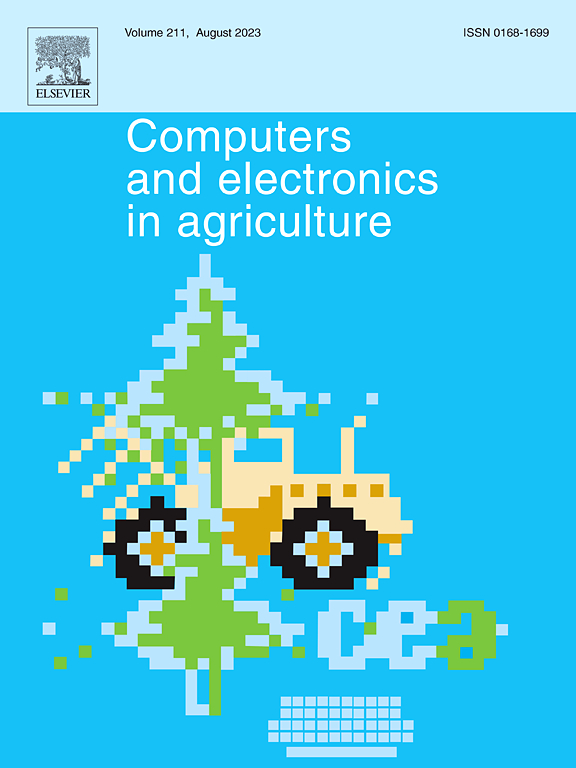使用模拟模型计算麦穗数
IF 7.7
1区 农林科学
Q1 AGRICULTURE, MULTIDISCIPLINARY
引用次数: 0
摘要
大量研究报道了小麦产量与麦穗数量之间的显著正相关关系。然而,由于环境的不可控、数据质量不一致和数据真实性不明确等原因,在田间收集麦穗数据带来了挑战。为了应对这些挑战,我们开发了一种模拟策略来复制真实麦田的条件,这使得数据收集过程能够在短时间内在室内进行。采用灰度图像处理对模拟小麦图像进行处理后,我们训练并测试了9个深度学习模型:Faster-RCNN、YOLOv7、YOLOv8、CenterNet、SSD、RetinaNet、EfficientDet、deform - detr和DINO。结果表明,YOLOv7的检测效果最佳(R2 = 0.963, RMSE = 2.463)。然后,我们将模拟小麦数据训练的模型与真实小麦数据训练的模型进行比较(R2 = 0.963 vs 0.972, RMSE = 2.463 vs 2.692)。我们还在GWHD、SDAU2021-SDAU2024五个测试集上取得了良好的模型性能。仿真结果验证了仿真的有效性,为精准农业社区提供了一种高效、便捷的策略。本文章由计算机程序翻译,如有差异,请以英文原文为准。
Counting wheat heads using a simulation model
Numerous studies have reported a significant positive correlation between wheat yield and the quantity of wheat heads. However, collecting data on wheat heads in the field poses a challenge for several reasons, including the uncontrollable nature of the environment, inconsistent data quality, and ambiguous data truth. To address these challenges, we developed a simulation strategy to replicate the conditions of a real wheat field, which enabled the data collection process to be conducted indoors over a short period. After applying grayscale image processing to process the simulated wheat images, we trained and tested nine deep learning models: Faster-RCNN, YOLOv7, YOLOv8, CenterNet, SSD, RetinaNet, EfficientDet, Deformable-DETR and DINO. Our results indicated that YOLOv7 performed the best (R2 = 0.963, RMSE = 2.463). We then compared our model trained on simulated wheat data to a model trained on real wheat data (R2 = 0.963 vs 0.972, RMSE = 2.463 vs 2.692). We also achieved good model performance on five test sets: GWHD, SDAU2021-SDAU2024. The results demonstrated the efficacy of our simulation, which provides an efficient and convenient strategy for the precision agriculture community.
求助全文
通过发布文献求助,成功后即可免费获取论文全文。
去求助
来源期刊

Computers and Electronics in Agriculture
工程技术-计算机:跨学科应用
CiteScore
15.30
自引率
14.50%
发文量
800
审稿时长
62 days
期刊介绍:
Computers and Electronics in Agriculture provides international coverage of advancements in computer hardware, software, electronic instrumentation, and control systems applied to agricultural challenges. Encompassing agronomy, horticulture, forestry, aquaculture, and animal farming, the journal publishes original papers, reviews, and applications notes. It explores the use of computers and electronics in plant or animal agricultural production, covering topics like agricultural soils, water, pests, controlled environments, and waste. The scope extends to on-farm post-harvest operations and relevant technologies, including artificial intelligence, sensors, machine vision, robotics, networking, and simulation modeling. Its companion journal, Smart Agricultural Technology, continues the focus on smart applications in production agriculture.
 求助内容:
求助内容: 应助结果提醒方式:
应助结果提醒方式:


